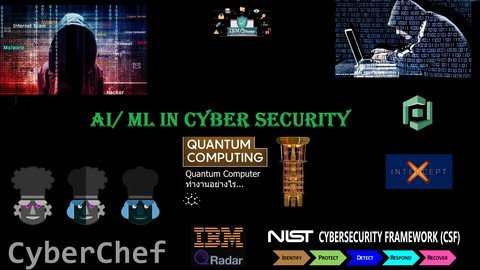What you’ll learn
Introduction to CyberChef, CyberArk, Cyber Intelligence & SOCINT
Quantum gates and Quantum codes in Qiskit and Pennylane
Quantum modeling using Quantum Variational Circuits
Measurements in Quantum Computing using Quantum Simulators
NISQs and Decoherence in Quantum Computing
Building a Quantum Computer
Fundamentals of Quantum Computing
Quantum Computing Exercises with Solutions
Quantum Encryption
Requirements
Students would be able to learn from scratch. No Pre- requisite is required
No programming skills are required.
Description
This 2 in 1 course would enable you to gain insights into the realm of Cyber Intelligence, Open Source Cyber Space, White Hat Hacking tools & Quantum Computing/ Encryption.
The students would be able to learn and develop expertise in Cyber Engineering, CyberChef, CyberArk and Hacking Tools/ Social Engineering in the first part of the course.
In the second part Quantum algorithms, gates, and implementation of these codes shall be elaborated.
Furthermore, the first part of this exciting course is an introduction to the emerging cyber intelligence/ security challenges at the application, network and cloud layers along-with cyber threats in the IoTs and the relevant cyber assessment tools.
In the second part of this course, students would be guided to implement quantum circuits and algorithms using quantum computing libraries and to run them using quantum simulators as well as real hardware.
The following topics shall be covered;
1. Introduction to Cyberchef, NIST, CyberArk (Cyber Intelligence).
2. Ethical Hacking Tools.
3. Cyber Intelligence in IoTs.
4. Open Source Cyber Mesh.
5. Quantum Gates.
6. Quantum Variational Circuits.
7. Optimization through Quantum Annealing.
8. Quantum Measurements.
9. Noisy Intermediate Scale Quantum Computing (NISQs).
10. Building a Quantum Computer
11. Impact of Quantum computing in cyberspace.
12. Quantum algorithms and code examples.
13. Implementation and testing of all codes in Qiskit.
14. Quantum Robot implementation in Qiskit.
15. Quantum Financial Systems and Markets.
16. Quantum Computing for Computer Vision.
17. Quantum Computing using NLP.
18. Quantum Programming Languages including .NET platform.
19. 25+ Coding Practice Problems with Solutions in QISKIT
At the end of the course the student will be able
To describe the differences between quantum and classic computation.
To build quantum circuits connecting different types of quantum gates.
To implement quantum circuits and algorithms using quantum programming libraries.
To run quantum circuits and algorithms using quantum simulators and real quantum computers.
To understand how to design quantum algorithms to solve multifarious problems.
Who this course is for
Beginners aspire to learn Quantum Computing from the very basics to the cutting edge topics
Learners aim to develop expertise of quantum simulators for modelling and testing
Research and Academic Students working in the realm of Data Science, Machine Learning, Quantum Computing and Reinforced Learning

